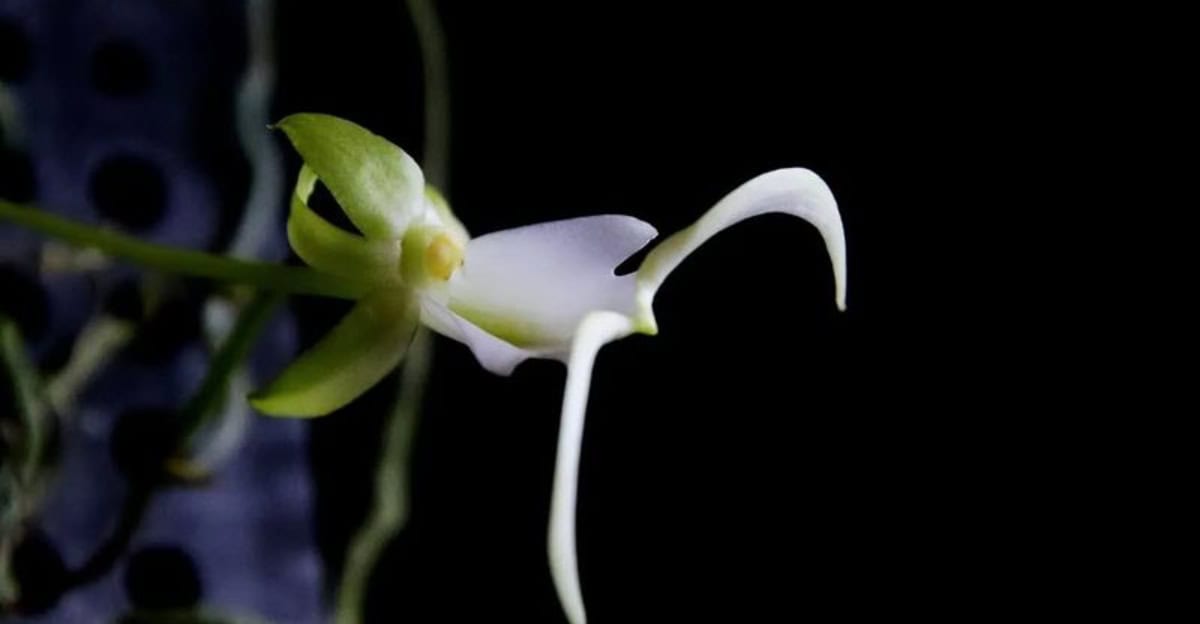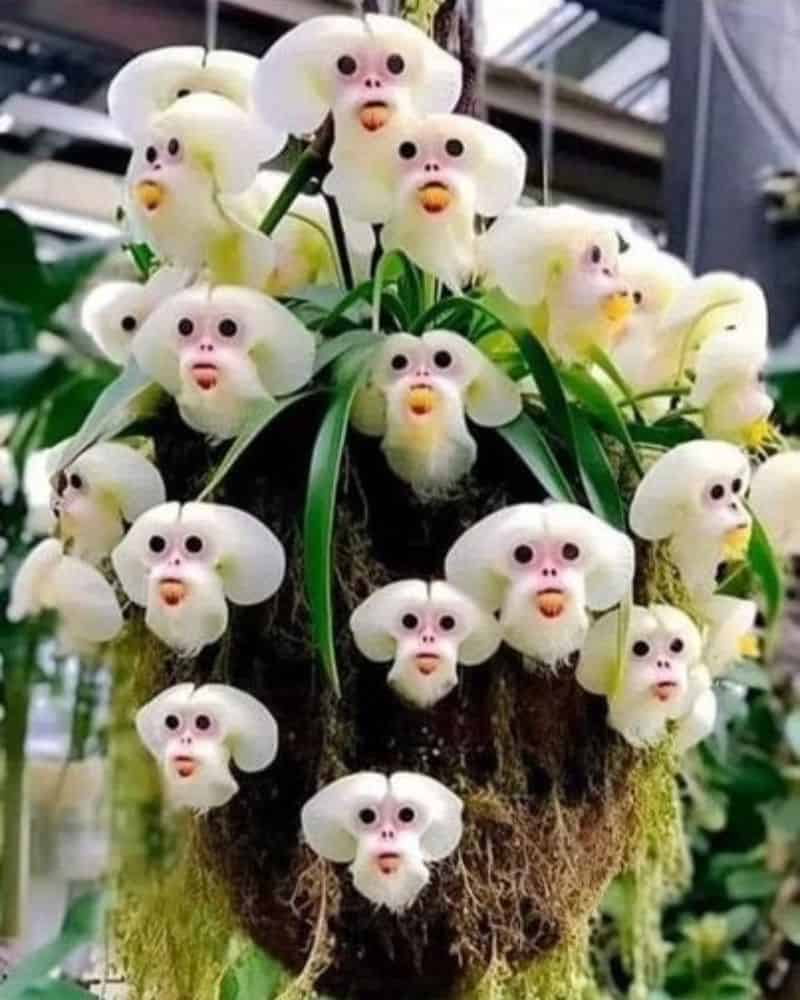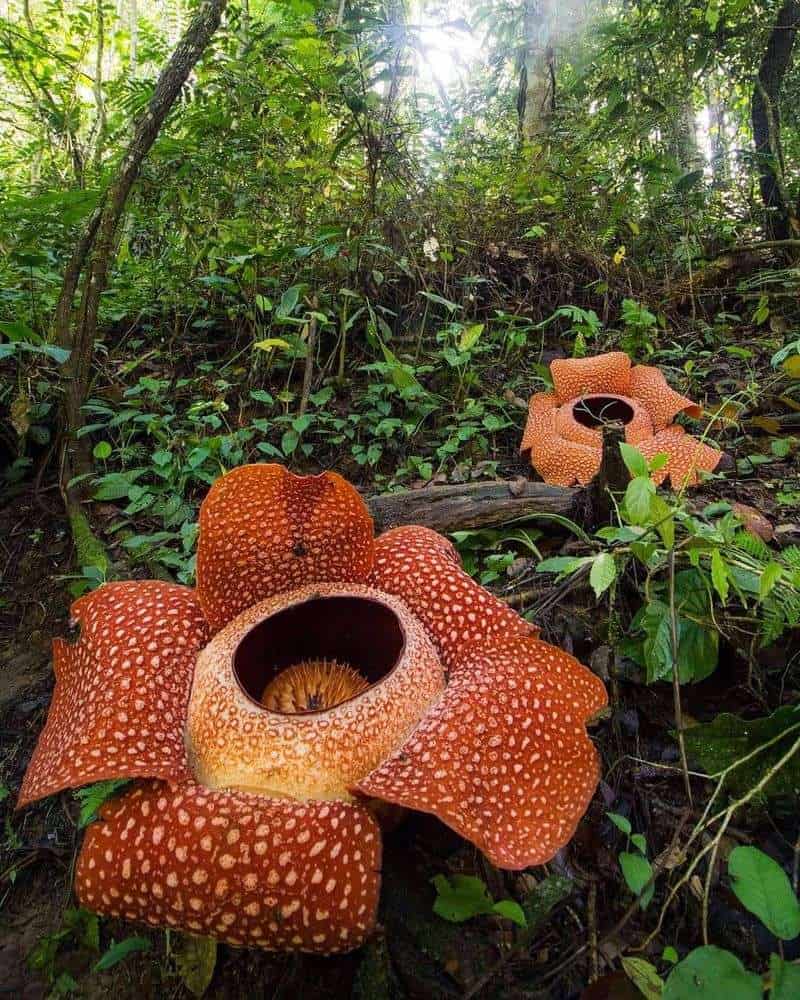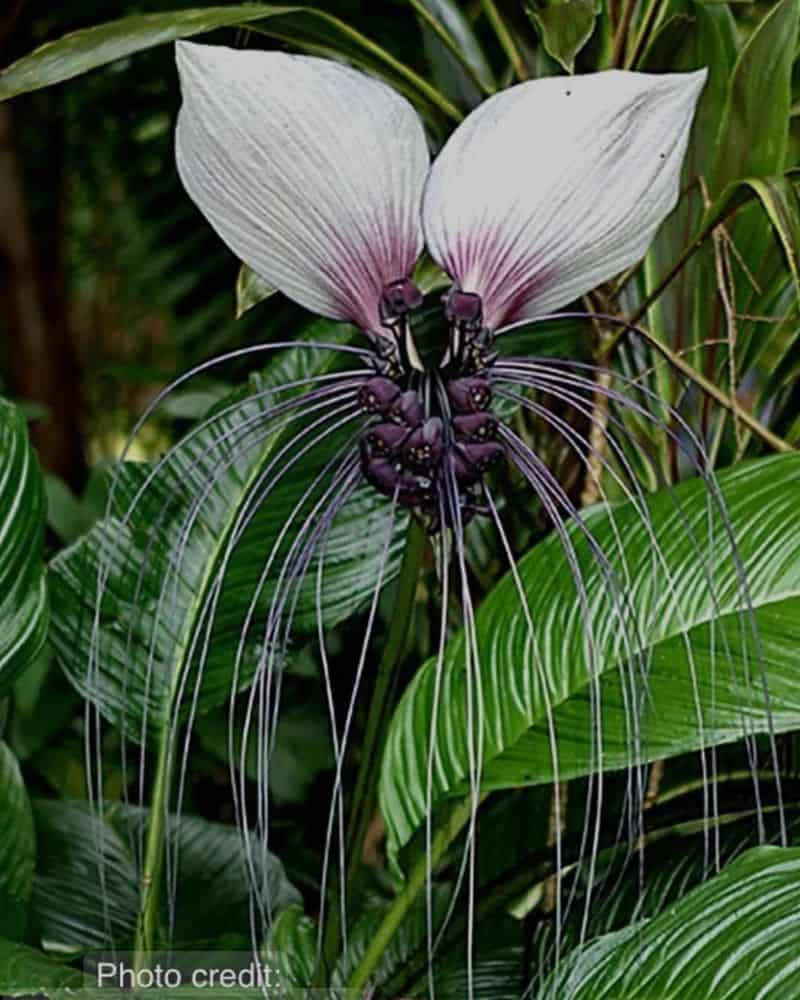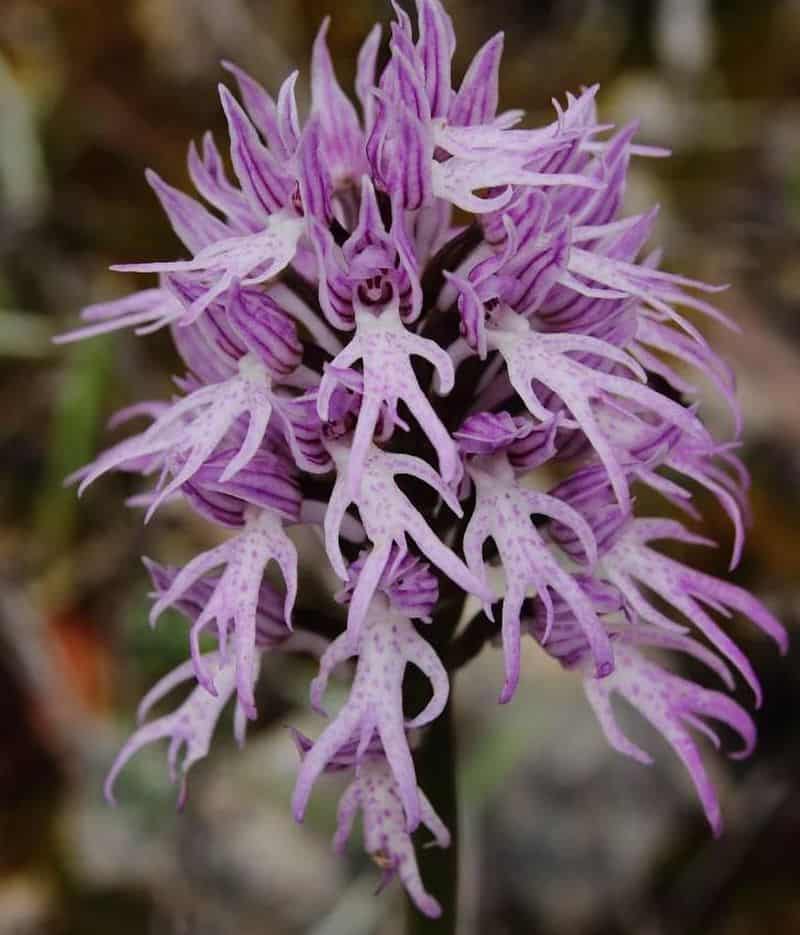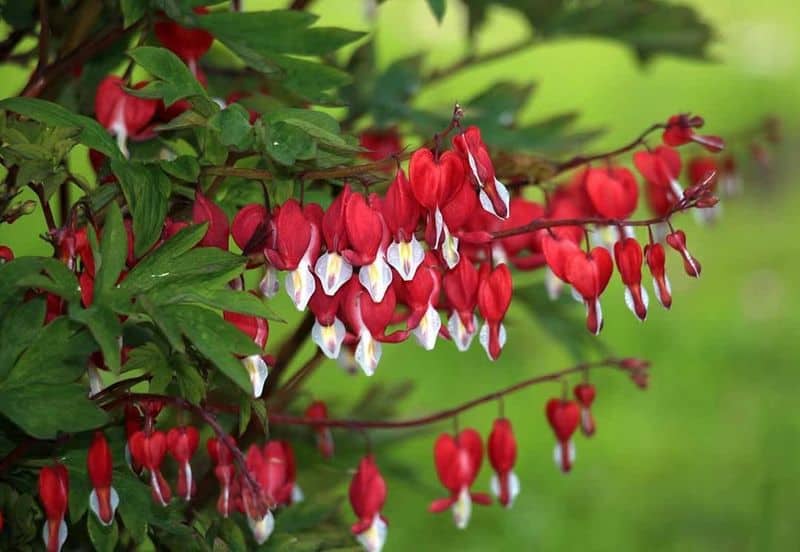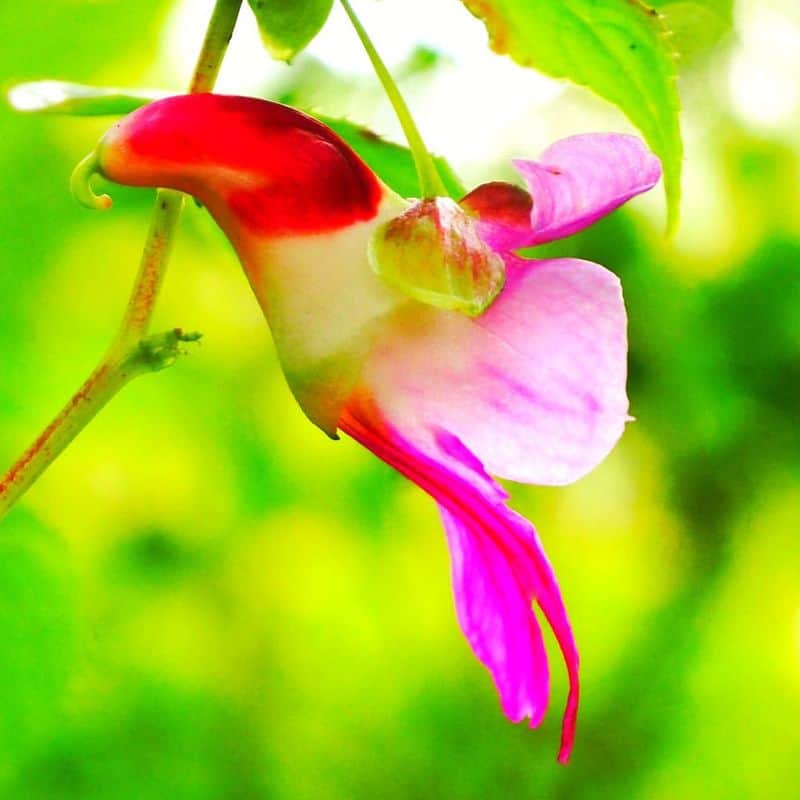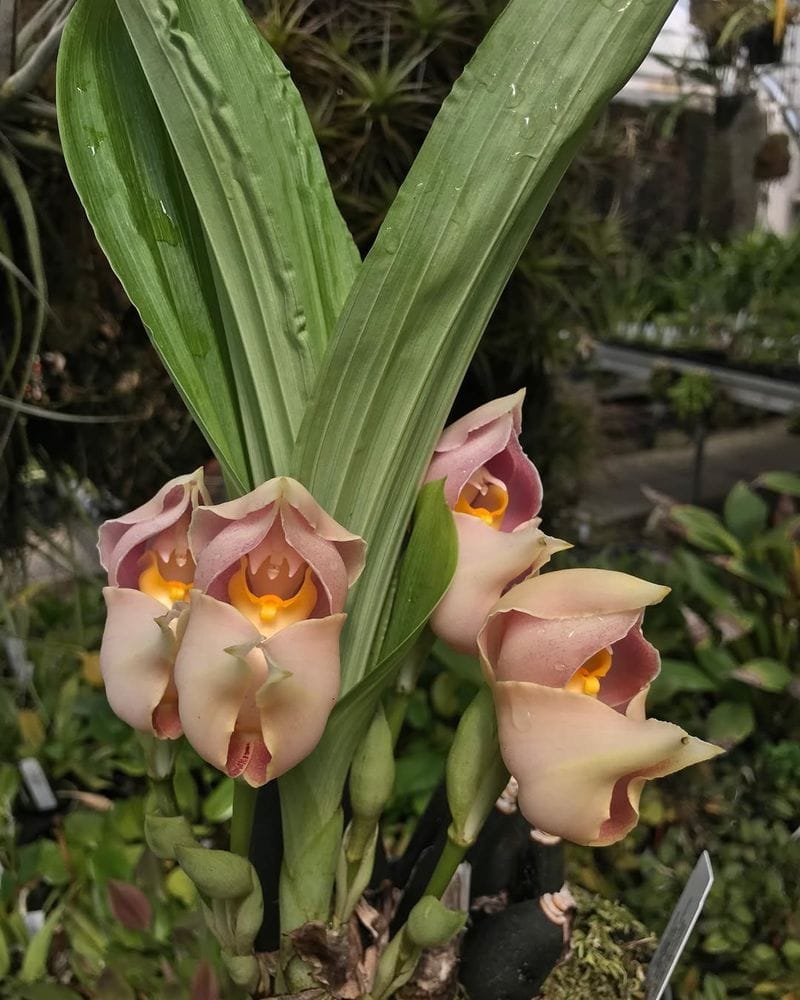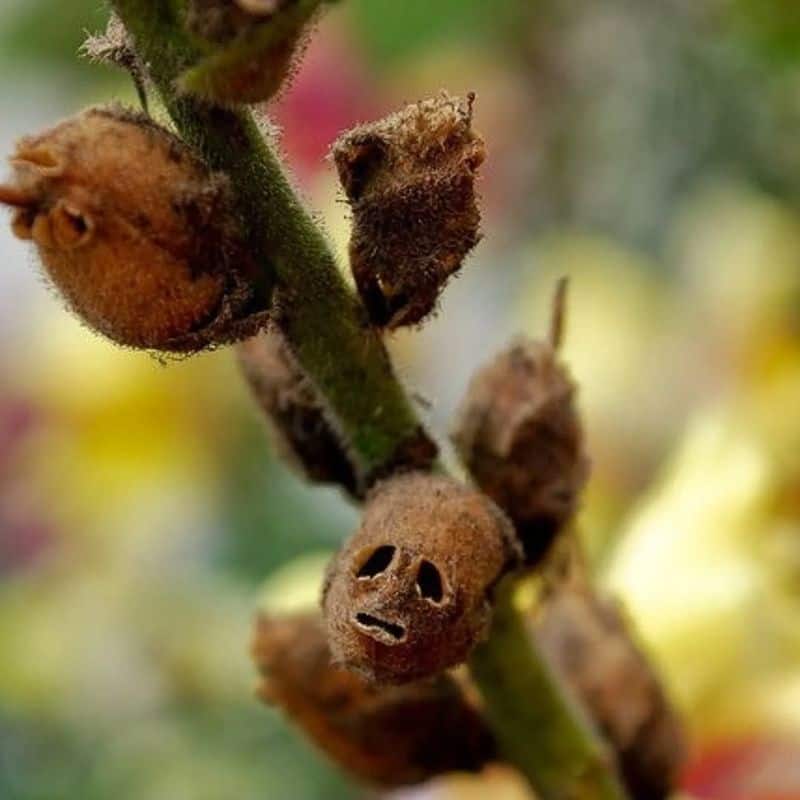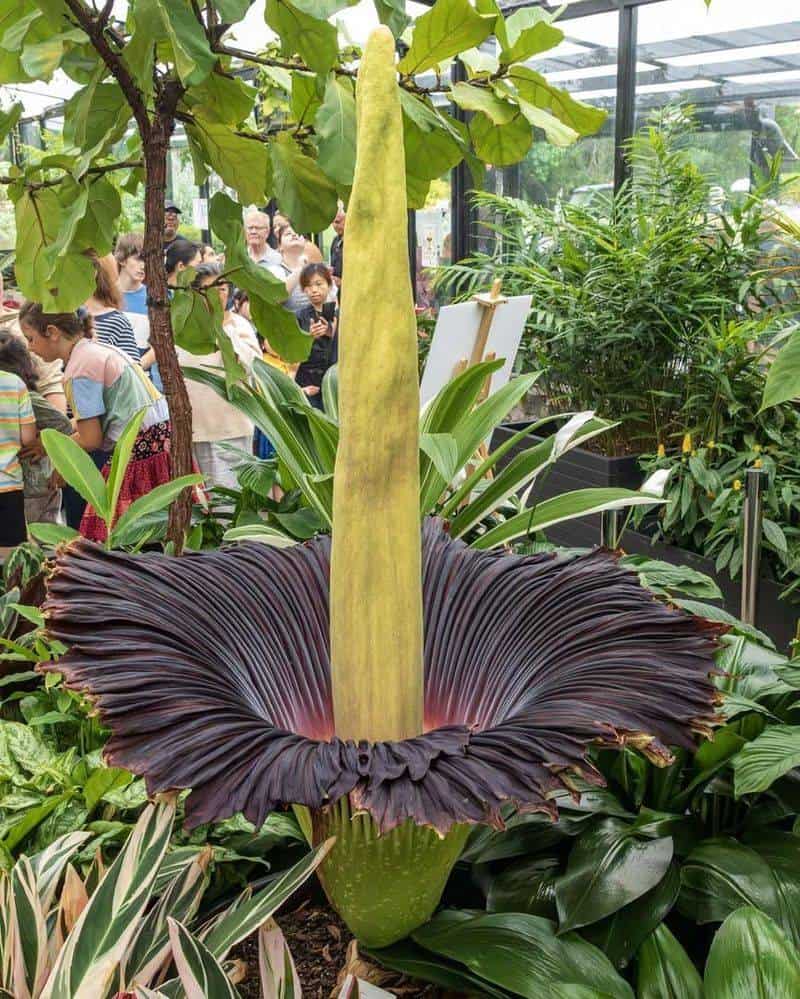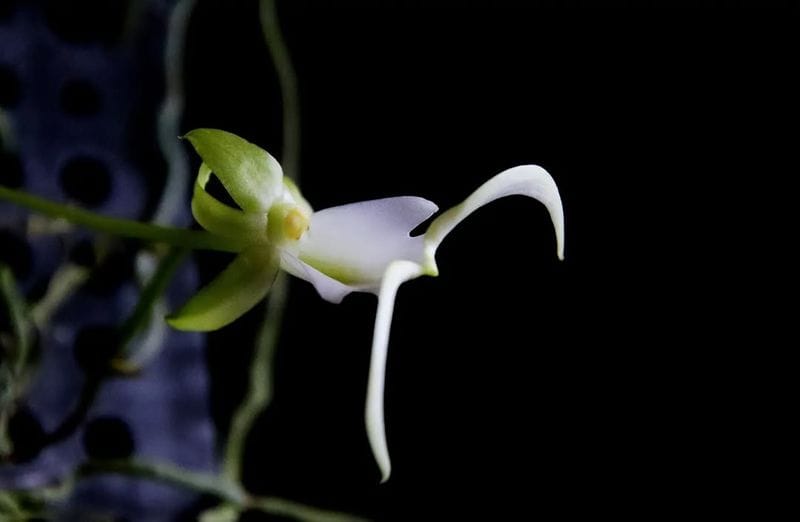The world of flora is filled with peculiar wonders that defy imagination.
From orchids that resemble the faces of primates to flowers that mimic exotic birds, each of these strange blooms offers a glimpse into the mesmerizing creativity of nature.
Let’s explore some of the world’s strangest flowers, where each petal tells a unique story.
1. Monkey Face Orchid (Dracula simia)
The Monkey Face Orchid, scientifically known as Dracula simia, is one of nature’s most playful creations.
Found in the cloud forests of southeastern Ecuador and Peru, this orchid lives up to its name with a distinct resemblance to a monkey’s face.
Its unique structure, with petals that mimic a primate’s features, makes it a fascinating sight. The orchid releases a citrusy fragrance, adding to its charm.
Though it might not swing from trees, this flower certainly knows how to stand out in its leafy surroundings. Spotting one in the wild is a true botanical treasure.
2. Corpse Flower (Rafflesia arnoldii)
The Corpse Flower, or Rafflesia arnoldii, holds the title for the world’s largest single bloom. Found in the rainforests of Sumatra, it can grow up to three feet in diameter.
Despite its unpleasant odor, resembling rotting flesh, this flower fascinates many. Its scent attracts carrion flies, essential for pollination.
The flower blooms unexpectedly and only for a short time, making each appearance a noteworthy event.
With no leaves, stems, or roots, Rafflesia lives parasitically on vines. It’s a rare and intriguing spectacle in the plant world.
3. Bat Plant (Tacca integrifolia)
The Bat Plant, Tacca integrifolia, is a whimsically eerie flower that bears a resemblance to bats in flight.
Native to tropical regions of Southeast Asia, its dark, wing-like bracts and whisker-like tendrils give it a gothic allure.
This plant thrives in shaded, humid environments, making it a favorite among exotic plant enthusiasts.
While its appearance might be spooky, the Bat Plant adds a touch of mystery to any garden. It’s a conversation starter, drawing curious glances and admiration for its unique design. A true garden oddity!
4. Naked Man Orchid (Orchis italica)
The Naked Man Orchid, or Orchis italica, is a cheeky floral wonder found in the Mediterranean region. Its flowers are humorously shaped like tiny, hooded figures, complete with rudimentary limbs.
These orchids add a playful touch to meadows and open woodlands. They bloom in vibrant shades of pink and purple, capturing the sunlight with their unique structure.
Beyond their funny appearance, they play a crucial role in local ecosystems, attracting pollinators with their bright colors and subtle fragrances. Nature’s humor at its best!
5. Bleeding Heart (Lamprocapnos spectabilis)
The Bleeding Heart, scientifically known as Lamprocapnos spectabilis, is a symbol of grace and beauty. Originating from Asia, its heart-shaped flowers dangle delicately from arching stems.
The pink and white blooms appear as if they’re dripping, hence the name. These romantic flowers bloom in spring, adding elegance to gardens.
Despite their fragile appearance, Bleeding Hearts are surprisingly hardy, thriving in cool, shady areas.
Their enchanting presence has made them a favorite in ornamental gardening. A blossom that tugs at the heartstrings!
6. Parrot Flower (Impatiens psittacina)
The Parrot Flower, Impatiens psittacina, is a rare gem from Southeast Asia. Its flowers mirror the vibrant silhouette of a parrot in flight, complete with tail feathers and wings.
This exotic plant captivates observers with its unique shape and vivid hues. In its native habitat, the Parrot Flower thrives in the temperate climates of Thailand and surrounding regions.
It’s an extraordinary example of how nature can imitate life, bringing a touch of tropical flair to any garden. A true avian impersonator!
7. Swaddled Babies Orchid (Anguloa uniflora)
The Swaddled Babies Orchid, Anguloa uniflora, is a charming plant with blooms resembling infants bundled in swaddling cloths.
Native to the Andean cloud forests, these orchids offer a whimsical touch to any floral collection. Their ivory blooms exude a subtle fragrance, adding to their allure.
The plant’s unique appearance and gentle scent make it a beloved choice among orchid enthusiasts.
Cultivating these orchids requires patience and care, rewarding gardeners with their delightful blossoms.
8. Snapdragon Seed Pods (Antirrhinum majus)
Snapdragon Seed Pods, from the plant Antirrhinum majus, are a macabre surprise in the garden. Once the bright flowers fade, the seed pods appear, resembling miniature dragon skulls.
This transformation from vibrant blooms to eerie pods captures the imagination. Native to rocky areas of Europe and North Africa, Snapdragons thrive in well-drained soil with plenty of sunlight.
The seed pods intrigue both children and adults alike, making them a favorite in gardens with a touch of whimsy.
9. Corpse Flower (Amorphophallus titanum)
The Amorphophallus titanum, also known as the Titan Arum or Corpse Flower, is famous for its colossal size and pungent aroma. Native to the rainforests of Sumatra, it can grow over seven feet tall.
Its odor, reminiscent of rotting meat, attracts pollinators like carrion beetles. This flower’s bloom is a rare spectacle, occurring infrequently and lasting only a few days.
Despite its smell, the Titan Arum is a captivating sight, drawing crowds eager to witness its grand display.
10. Ghost Orchid (Dendrophylax lindenii)
The Ghost Orchid, Dendrophylax lindenii, is a rare and elusive beauty found in Cuba and Florida’s swamps. With no leaves, it appears to float in mid-air, its white flowers exuding an ethereal glow.
This orchid’s ghostly presence is both haunting and mesmerizing. Its pollination relies on the giant sphinx moth, attracted by the flower’s night-time fragrance.
The Ghost Orchid’s rarity and ethereal charm make it a prized find for botanists and nature lovers alike. A phantom in the floral realm!

